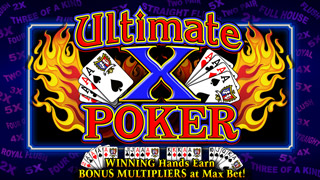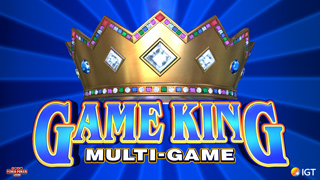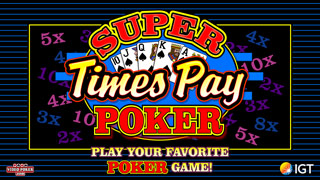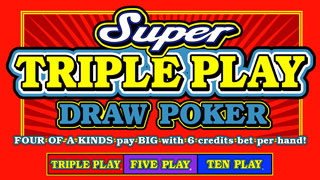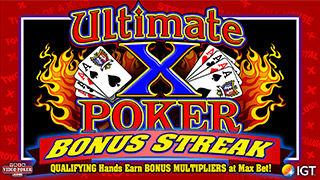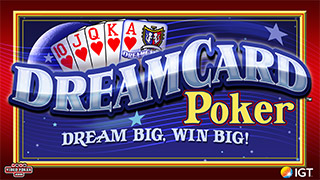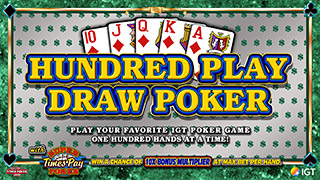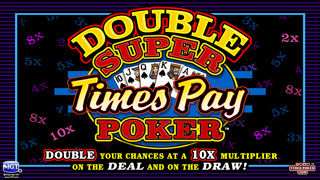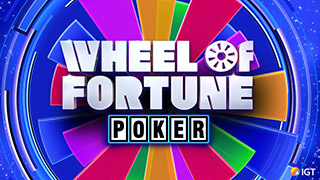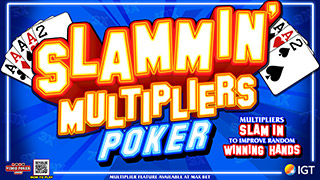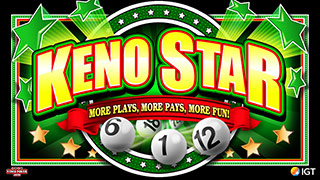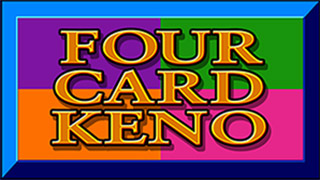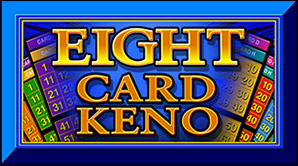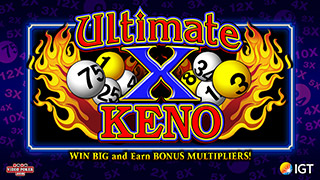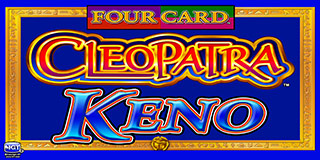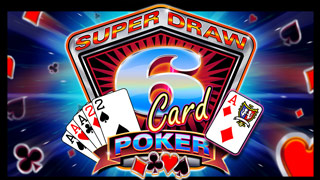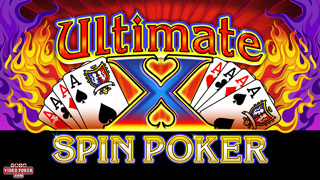Thoughts For Beginners
-
onemoretry
- Video Poker Master
- Posts: 3053
- Joined: Tue Mar 03, 2009 8:00 pm
Re: Thoughts For Beginners
Personally amazed at the level of details you've kept on your playing sessions all these years.It wasn't really all that difficult. Setting up a spreadsheet at the outset was a bit of a chore. After that, though, I had only to enter total points for the visit, and the amount won or lost, and the program looked after the rest. I do admit, though, that I've not bothered to keep such a detailed account for any other casino.
-
onemoretry
- Video Poker Master
- Posts: 3053
- Joined: Tue Mar 03, 2009 8:00 pm
I think it must mean you are over royaled at Seneca.
Unfortunately, that is not the case. My royal hit rate at Seneca mirrors that at Rama at about one per 51000 total hands.
I know it sounds a bit like "poor me", but over quite an extensive amount of video poker play, I feel I'm considerably "under royalled". But, that's gambling.
The last couple of years in Nevada, on the other hand, have been pretty good, from a royal flush standpoint.
We're heading off to Vegas in a couple of weeks - I certainly hope that recent trend continues.
Unfortunately, that is not the case. My royal hit rate at Seneca mirrors that at Rama at about one per 51000 total hands.
I know it sounds a bit like "poor me", but over quite an extensive amount of video poker play, I feel I'm considerably "under royalled". But, that's gambling.
The last couple of years in Nevada, on the other hand, have been pretty good, from a royal flush standpoint.
We're heading off to Vegas in a couple of weeks - I certainly hope that recent trend continues.
-
New2vp
- Video Poker Master
- Posts: 1853
- Joined: Mon Sep 11, 2006 4:02 am
Do you know where I can find the analysis of the Ultimate X Bonus Streak game? I was wondering how the strategy approach ended up to be.I don't think there is a great source that will help you develop strategy for any given game, at least for 10-play ... unless you can generalize Koehler's approach to Bonus Streak and solve the problem that he has not yet solved to speed up his analysis. This is not on the Wizard of Odds site yet, but it looks like it will be there soon. The Wizard is previewing the page to his math groupies on Wizard of Vegas. I don't know how long it is been there, but an early post has been updated to include a new paper by Koehler (January 2017). The latest update was today, but maybe the paper was there earlier. Koehler outlines the process that he was using for Ultimate X and how he had to modify that for Bonus Streak. As predicted, he has not solved the EV for the 10-play versions at this point, so the exact strategy cannot yet be determined by his methodology.I've worked out a single-line strategy for the TDB 10-play pay schedule and mutlipliers consistent with this site, but Koehler's version was for a different pay schedule, different multipliers, and I believe he has a couple typos today. So, I can't really check to see if his method ties with mine, other than to say that it looks reasonably consistent. You might note that on this site 3-play and 5-play are 7-5 with more generous multipliers vs. the 9-5 pay schedule that exists for 10-play. He reports a version for 9-6-5, but I would imagine that he was actually calculating the more common 9-6-4 pay schedule. It has been a while since I did this calculation, but I believe that the 9-5 single line version's optimal play can improve TDB's standard 97.0204% EV to 97.7546%. 10-play will necessarily be lower than this (if I calculated it correctly) because the single line version assumes that you can play each single hand optimally while, with 10-play, you will generally have some of the 10-play hands on different bonus "streaks" than others. So you will have to compromise on your play strategy since you will draw the same cards to all hands regardless of their individual current and future multipliers. Therefore, since not all hands can be played optimally, you will not be able to exceed the 97.7546% single line EV, and will be virtually guaranteed to have a lower that single-hand EV.
-
alpax
- Video Poker Master
- Posts: 1940
- Joined: Sat Jun 14, 2014 4:42 pm
It wasn't really all that difficult. Setting up a spreadsheet at the outset was a bit of a chore. After that, though, I had only to enter total points for the visit, and the amount won or lost, and the program looked after the rest. I do admit, though, that I've not bothered to keep such a detailed account for any other casino.
Unfortunately, that is not the case. My royal hit rate at Seneca mirrors that at Rama at about one per 51000 total hands.
I know it sounds a bit like "poor me", but over quite an extensive amount of video poker play, I feel I'm considerably "under royalled". But, that's gambling.
The last couple of years in Nevada, on the other hand, have been pretty good, from a royal flush standpoint.
We're heading off to Vegas in a couple of weeks - I certainly hope that recent trend continues.
Much appreciated for the responses.
I should have mentioned that the organization of results is impressive from a technological standpoint. Spreadsheet software was at a premium cost (Microsoft Office Excel was by far the best at the time) two decades ago and people go through many computer replacements. To be able to retain the data and record every detail during that time for that long until now is no easy thing to do. These days it is widely accessible over online or "the cloud" on Google Sheets, over various devices. Computing power for the consumers have reached a point where a replacement is not needed for at least 5 years. Setting up macro formulas on the spreadsheets is tedious at first, but as you've stated, it becomes convenient thereafter to punch in numbers. People who had those skills were highly coveted in accounting jobs in the past.
Slightly surprised at the results over the run while you had the advantage. I felt the volume of play mentioned would have reached more closer to the theoretical return. I just threw the assumption that you are over royaled at another stomping ground to make up for the royal flush pace. Results are results and cannot be disputed. Still I hope these results do not fuel the ego of the naysayers of the advantage opportunities are not guaranteed. Luck still plays a small factor.
Best of luck to you on your trip to Vegas.
I don't think there is a great source that will help you develop strategy for any given game, at least for 10-play ... unless you can generalize Koehler's approach to Bonus Streak and solve the problem that he has not yet solved to speed up his analysis. This is not on the Wizard of Odds site yet, but it looks like it will be there soon. The Wizard is previewing the page to his math groupies on Wizard of Vegas. I don't know how long it is been there, but an early post has been updated to include a new paper by Koehler (January 2017). The latest update was today, but maybe the paper was there earlier. Koehler outlines the process that he was using for Ultimate X and how he had to modify that for Bonus Streak. As predicted, he has not solved the EV for the 10-play versions at this point, so the exact strategy cannot yet be determined by his methodology.I've worked out a single-line strategy for the TDB 10-play pay schedule and mutlipliers consistent with this site, but Koehler's version was for a different pay schedule, different multipliers, and I believe he has a couple typos today. So, I can't really check to see if his method ties with mine, other than to say that it looks reasonably consistent. You might note that on this site 3-play and 5-play are 7-5 with more generous multipliers vs. the 9-5 pay schedule that exists for 10-play. He reports a version for 9-6-5, but I would imagine that he was actually calculating the more common 9-6-4 pay schedule. It has been a while since I did this calculation, but I believe that the 9-5 single line version's optimal play can improve TDB's standard 97.0204% EV to 97.7546%. 10-play will necessarily be lower than this (if I calculated it correctly) because the single line version assumes that you can play each single hand optimally while, with 10-play, you will generally have some of the 10-play hands on different bonus "streaks" than others. So you will have to compromise on your play strategy since you will draw the same cards to all hands regardless of their individual current and future multipliers. Therefore, since not all hands can be played optimally, you will not be able to exceed the 97.7546% single line EV, and will be virtually guaranteed to have a lower that single-hand EV. Â
Much appreciated for all the details. I've never registered for a Wizard of Vegas account so I cannot be a candidate to see Shackleford's analysis before it gets posted onto a site. Very broad range of situations and states to analyze for the game, and there are multiple game variants as well.
I've personally made an attempt on analyzing 10-play Double Double Bonus a few months ago, unfortunately Double Bonus and Triple Double Bonus was analyzed instead. I did not use a precise mathematical distribution formulas mentioned in Koehler's work, I just ran computer simulations for at least well more than 200 combined hours (I saw a surge of $28 on the month's electricity bill, so I decided to slow down). I wanted to see overall how I fared against the work of a mathematical expert.
I do notice the pay schedules are substandard for 3 and 5 play modes compared to 10 play mode (6-5 DDB 3/5 Play vs 8-5 DDB for 10 play). I saw a screenshot of a G2E demo machine that had 9-5 DDB. The two casinos I saw this game available had it set to 8-5 DDB for nickels and dimes.
IGT made available the product brochure of Ult X Bonus Streak
Link
It says the highest paying configuration is at 99%.
In the end, it takes so much adjustments and efforts to properly play a game that may only return somewhere around mid 97%. I do not think this game is worth a serious consideration by many.
Unfortunately, that is not the case. My royal hit rate at Seneca mirrors that at Rama at about one per 51000 total hands.
I know it sounds a bit like "poor me", but over quite an extensive amount of video poker play, I feel I'm considerably "under royalled". But, that's gambling.
The last couple of years in Nevada, on the other hand, have been pretty good, from a royal flush standpoint.
We're heading off to Vegas in a couple of weeks - I certainly hope that recent trend continues.
Much appreciated for the responses.
I should have mentioned that the organization of results is impressive from a technological standpoint. Spreadsheet software was at a premium cost (Microsoft Office Excel was by far the best at the time) two decades ago and people go through many computer replacements. To be able to retain the data and record every detail during that time for that long until now is no easy thing to do. These days it is widely accessible over online or "the cloud" on Google Sheets, over various devices. Computing power for the consumers have reached a point where a replacement is not needed for at least 5 years. Setting up macro formulas on the spreadsheets is tedious at first, but as you've stated, it becomes convenient thereafter to punch in numbers. People who had those skills were highly coveted in accounting jobs in the past.
Slightly surprised at the results over the run while you had the advantage. I felt the volume of play mentioned would have reached more closer to the theoretical return. I just threw the assumption that you are over royaled at another stomping ground to make up for the royal flush pace. Results are results and cannot be disputed. Still I hope these results do not fuel the ego of the naysayers of the advantage opportunities are not guaranteed. Luck still plays a small factor.
Best of luck to you on your trip to Vegas.
I don't think there is a great source that will help you develop strategy for any given game, at least for 10-play ... unless you can generalize Koehler's approach to Bonus Streak and solve the problem that he has not yet solved to speed up his analysis. This is not on the Wizard of Odds site yet, but it looks like it will be there soon. The Wizard is previewing the page to his math groupies on Wizard of Vegas. I don't know how long it is been there, but an early post has been updated to include a new paper by Koehler (January 2017). The latest update was today, but maybe the paper was there earlier. Koehler outlines the process that he was using for Ultimate X and how he had to modify that for Bonus Streak. As predicted, he has not solved the EV for the 10-play versions at this point, so the exact strategy cannot yet be determined by his methodology.I've worked out a single-line strategy for the TDB 10-play pay schedule and mutlipliers consistent with this site, but Koehler's version was for a different pay schedule, different multipliers, and I believe he has a couple typos today. So, I can't really check to see if his method ties with mine, other than to say that it looks reasonably consistent. You might note that on this site 3-play and 5-play are 7-5 with more generous multipliers vs. the 9-5 pay schedule that exists for 10-play. He reports a version for 9-6-5, but I would imagine that he was actually calculating the more common 9-6-4 pay schedule. It has been a while since I did this calculation, but I believe that the 9-5 single line version's optimal play can improve TDB's standard 97.0204% EV to 97.7546%. 10-play will necessarily be lower than this (if I calculated it correctly) because the single line version assumes that you can play each single hand optimally while, with 10-play, you will generally have some of the 10-play hands on different bonus "streaks" than others. So you will have to compromise on your play strategy since you will draw the same cards to all hands regardless of their individual current and future multipliers. Therefore, since not all hands can be played optimally, you will not be able to exceed the 97.7546% single line EV, and will be virtually guaranteed to have a lower that single-hand EV. Â
Much appreciated for all the details. I've never registered for a Wizard of Vegas account so I cannot be a candidate to see Shackleford's analysis before it gets posted onto a site. Very broad range of situations and states to analyze for the game, and there are multiple game variants as well.
I've personally made an attempt on analyzing 10-play Double Double Bonus a few months ago, unfortunately Double Bonus and Triple Double Bonus was analyzed instead. I did not use a precise mathematical distribution formulas mentioned in Koehler's work, I just ran computer simulations for at least well more than 200 combined hours (I saw a surge of $28 on the month's electricity bill, so I decided to slow down). I wanted to see overall how I fared against the work of a mathematical expert.
I do notice the pay schedules are substandard for 3 and 5 play modes compared to 10 play mode (6-5 DDB 3/5 Play vs 8-5 DDB for 10 play). I saw a screenshot of a G2E demo machine that had 9-5 DDB. The two casinos I saw this game available had it set to 8-5 DDB for nickels and dimes.
IGT made available the product brochure of Ult X Bonus Streak
Link
It says the highest paying configuration is at 99%.
In the end, it takes so much adjustments and efforts to properly play a game that may only return somewhere around mid 97%. I do not think this game is worth a serious consideration by many.
-
Vman96
- Video Poker Master
- Posts: 3298
- Joined: Tue Jul 26, 2011 12:49 am
Disappointing to see the highest available payback is 99% flat. And really 3 and 5 play are set two notches lower typically in the casino? Pretty sure it wasn't this way at my locals... Actually I'm pretty sure 8/5 TDB existed straight across the board for 3/5/10 play.
Likely the Wizard just plopped in the data he was given. The tiny increases for optimal play is a bit depressing though. Looks less than the original.
I am also confused...the multipliers look to depress on 10-play on the Wizard's page, but the returns increase for 10-play? Don't more lines depress the return with constant multipliers?
Question I would love to know is...how much crazier is this strategy vs. standard ultimate x. it definitely doesn't feel like there is a big change...
Likely the Wizard just plopped in the data he was given. The tiny increases for optimal play is a bit depressing though. Looks less than the original.
I am also confused...the multipliers look to depress on 10-play on the Wizard's page, but the returns increase for 10-play? Don't more lines depress the return with constant multipliers?
Question I would love to know is...how much crazier is this strategy vs. standard ultimate x. it definitely doesn't feel like there is a big change...
-
onemoretry
- Video Poker Master
- Posts: 3053
- Joined: Tue Mar 03, 2009 8:00 pm
Spreadsheet software was at a premium cost (Microsoft Office Excel was by far the best at the time) two decades ago and people go through many computer replacements.
My original spreadsheet was created with Lotus 123. I was able to convert it to Excel later.
An interesting thing about the royal count is that my wife, over that same period of time, playing more super aces and deuces wild than JOB, had 94 royals in a little over three million hands. Combined, our hit rate was about one royal per 41250 hands.
My original spreadsheet was created with Lotus 123. I was able to convert it to Excel later.
An interesting thing about the royal count is that my wife, over that same period of time, playing more super aces and deuces wild than JOB, had 94 royals in a little over three million hands. Combined, our hit rate was about one royal per 41250 hands.
-
New2vp
- Video Poker Master
- Posts: 1853
- Joined: Mon Sep 11, 2006 4:02 am
I am also confused...the multipliers look to depress on 10-play on the Wizard's page, but the returns increase for 10-play? Don't more lines depress the return with constant multipliers?All other things equal you are right. E.g., if we look at 9-5 TDB, you see 3-play 97.49%, 5-play 97.39%, 10-play 97.45%. And you are right that the 10-play multipliers are lower. What's going on? With equal multipliers, 10-play should be lower than 5-play, not higher. We might get a clue from what you see online here at videopoker.com. Check out the streaks for 3 of a Kind. For 3-play and 5-play, the streaks extend only 2 hands: 2x and 4x. For 10-play, it extends 3 hands: 2x, 3x, and 4x. There is an extra 3x in there, a potential between 9 and 10 coins. And this is one extra hand that could turn into a 12x hand. So what the Wizard is calling Streak 1 may not be applicable for some of the 10-play hands. I'm not certain which is wrong, the Wizard or videopoker.com, but I'm going to guess that it is the Wizard. Maybe it is not really wrong, but just that sometimes one of those streaks are not applicable. Nevertheless, the interpretation that I gave would be consistent with the results that 10-play was higher since 3 of a Kind is such a relatively likely outcome.
Question I would love to know is...how much crazier is this strategy
vs. standard ultimate x. it definitely doesn't feel like there is a
big change...There is a very large change in some cases. E.g., in Bonus Streak, after a full house or better, let's say you get the TDB 10-play streak of 2x, 3x, 4x, 8x, 12x. Now in the next hand if you could get a 3 of a kind or better, you can turn the next 4 hands from 3x, 4x, 8x, 12x into 12x, 12x, 12x, 12x. This is a gain of 9x, 8x, 4x, and 0x, an expected value of around an initially-apparent 100 coins*. You can't do much strategically to get more 3 of a kinds, but you sure can play a lot of marginal holds to increase the number of straights and flush outcomes. And most of the time, you won't want to play a lot of marginal straight and flush draws ... because it isn't worth as much.(*It is not really 100 coins, because even if you miss this time, you have another couple chances to increase the remaining non12x multipliers to 12x. This "infinite-horizon" algebra gets tricky right away, which is why you have to use some of the Koehler "tricks" to properly evaluate it).With Ultimate X, the changes in strategy are very gradual as the multiplier increases. You don't gain much by worrying about whether the combined multiplier is 15x or 20x (over 10 hands). But with Bonus Streak, it makes a difference whether or not you have an active streak that is susceptible to an increase ... and how much you gain by changing what you have into a string of 12x's.With Ultimate X, a single one-size fits-all-multipliers strategy doesn't lose you much from optimal. And you can just have a few extra plays away from that strategy that improve the EV marginally. With Bonus Streak, not so much.
-
alpax
- Video Poker Master
- Posts: 1940
- Joined: Sat Jun 14, 2014 4:42 pm
[QUOTE=alpax] Spreadsheet software was at a premium cost (Microsoft Office Excel was by far the best at the time) two decades ago and people go through many computer replacements.
My original spreadsheet was created with Lotus 123. I was able to convert it to Excel later.
An interesting thing about the royal count is that my wife, over that same period of time, playing more super aces and deuces wild than JOB, had 94 royals in a little over three million hands. Combined, our hit rate was about one royal per 41250 hands.[/QUOTE]
I completely forgot about the Lotus software suite, it was not as simplistic as Office. But nonetheless, kudos to you for retaining the result over the time.
The results combined between you and your spouse are much closer to the norm, although I thought just the sheer amount of play between one of you might have been consistent with the average, granted Super Aces is much higher variance than DW and JOB.
All other things equal you are right. E.g., if we look at 9-5 TDB, you see 3-play 97.49%, 5-play 97.39%, 10-play 97.45%. And you are right that the 10-play multipliers are lower. What's going on? With equal multipliers, 10-play should be lower than 5-play, not higher. We might get a clue from what you see online here at videopoker.com. Check out the streaks for 3 of a Kind. For 3-play and 5-play, the streaks extend only 2 hands: 2x and 4x. For 10-play, it extends 3 hands: 2x, 3x, and 4x. There is an extra 3x in there, a potential between 9 and 10 coins. And this is one extra hand that could turn into a 12x hand. So what the Wizard is calling Streak 1 may not be applicable for some of the 10-play hands. I'm not certain which is wrong, the Wizard or videopoker.com, but I'm going to guess that it is the Wizard. Maybe it is not really wrong, but just that sometimes one of those streaks are not applicable. Nevertheless, the interpretation that I gave would be consistent with the results that 10-play was higher since 3 of a Kind is such a relatively likely outcome.
I did see an update was quite recent on the Wizard of Odds website. I provided the screen shot of the pay schedules of the 3/5 Play and the 10 Play. The 10 Play does not have the Streak 1 on ALL the game variants as described by the Wizard.
For the 3 and 5 Play TDB
For the 10 Play TDB
There is a very large change in some cases. E.g., in Bonus Streak, after a full house or better, let's say you get the TDB 10-play streak of 2x, 3x, 4x, 8x, 12x. Now in the next hand if you could get a 3 of a kind or better, you can turn the next 4 hands from 3x, 4x, 8x, 12x into 12x, 12x, 12x, 12x. This is a gain of 9x, 8x, 4x, and 0x, an expected value of around an initially-apparent 100 coins*. You can't do much strategically to get more 3 of a kinds, but you sure can play a lot of marginal holds to increase the number of straights and flush outcomes. And most of the time, you won't want to play a lot of marginal straight and flush draws ... because it isn't worth as much.(*It is not really 100 coins, because even if you miss this time, you have another couple chances to increase the remaining non12x multipliers to 12x. This "infinite-horizon" algebra gets tricky right away, which is why you have to use some of the Koehler "tricks" to properly evaluate it).With Ultimate X, the changes in strategy are very gradual as the multiplier increases. You don't gain much by worrying about whether the combined multiplier is 15x or 20x (over 10 hands). But with Bonus Streak, it makes a difference whether or not you have an active streak that is susceptible to an increase ... and how much you gain by changing what you have into a string of 12x's.With Ultimate X, a single one-size fits-all-multipliers strategy doesn't lose you much from optimal. And you can just have a few extra plays away from that strategy that improve the EV marginally. With Bonus Streak, not so much.Â
Yes that is correct with my analysis. When you are on a streak (the Streak 3 which is 5 hands 5 hands), at some point it is worth switching to regular standard optimal play. There is not much gain to the multiplier if the player is going to make a suboptimal play to try to get a 3 of a Kind or Better hand for better future returns.
I estimated 10-Play 8-5 DDB would return 97.67% on the average of 50 years worth of constant play simulation, that takes into account of the total multipliers and such. I based on that to do the decision making and I ensured the simulation game parameters were correct.
But the reported figure is much lower at 97.24%
I am not sure if that figure is based on 2x,3x Streak 1 for 3 of a Kinds. But the 3 of a Kinds in the game I see online and at the live casino pays out 2x, 3x, and 4x. This could be a substantial difference which remains a mystery.
My original spreadsheet was created with Lotus 123. I was able to convert it to Excel later.
An interesting thing about the royal count is that my wife, over that same period of time, playing more super aces and deuces wild than JOB, had 94 royals in a little over three million hands. Combined, our hit rate was about one royal per 41250 hands.[/QUOTE]
I completely forgot about the Lotus software suite, it was not as simplistic as Office. But nonetheless, kudos to you for retaining the result over the time.
The results combined between you and your spouse are much closer to the norm, although I thought just the sheer amount of play between one of you might have been consistent with the average, granted Super Aces is much higher variance than DW and JOB.
All other things equal you are right. E.g., if we look at 9-5 TDB, you see 3-play 97.49%, 5-play 97.39%, 10-play 97.45%. And you are right that the 10-play multipliers are lower. What's going on? With equal multipliers, 10-play should be lower than 5-play, not higher. We might get a clue from what you see online here at videopoker.com. Check out the streaks for 3 of a Kind. For 3-play and 5-play, the streaks extend only 2 hands: 2x and 4x. For 10-play, it extends 3 hands: 2x, 3x, and 4x. There is an extra 3x in there, a potential between 9 and 10 coins. And this is one extra hand that could turn into a 12x hand. So what the Wizard is calling Streak 1 may not be applicable for some of the 10-play hands. I'm not certain which is wrong, the Wizard or videopoker.com, but I'm going to guess that it is the Wizard. Maybe it is not really wrong, but just that sometimes one of those streaks are not applicable. Nevertheless, the interpretation that I gave would be consistent with the results that 10-play was higher since 3 of a Kind is such a relatively likely outcome.
I did see an update was quite recent on the Wizard of Odds website. I provided the screen shot of the pay schedules of the 3/5 Play and the 10 Play. The 10 Play does not have the Streak 1 on ALL the game variants as described by the Wizard.
For the 3 and 5 Play TDB
For the 10 Play TDB
There is a very large change in some cases. E.g., in Bonus Streak, after a full house or better, let's say you get the TDB 10-play streak of 2x, 3x, 4x, 8x, 12x. Now in the next hand if you could get a 3 of a kind or better, you can turn the next 4 hands from 3x, 4x, 8x, 12x into 12x, 12x, 12x, 12x. This is a gain of 9x, 8x, 4x, and 0x, an expected value of around an initially-apparent 100 coins*. You can't do much strategically to get more 3 of a kinds, but you sure can play a lot of marginal holds to increase the number of straights and flush outcomes. And most of the time, you won't want to play a lot of marginal straight and flush draws ... because it isn't worth as much.(*It is not really 100 coins, because even if you miss this time, you have another couple chances to increase the remaining non12x multipliers to 12x. This "infinite-horizon" algebra gets tricky right away, which is why you have to use some of the Koehler "tricks" to properly evaluate it).With Ultimate X, the changes in strategy are very gradual as the multiplier increases. You don't gain much by worrying about whether the combined multiplier is 15x or 20x (over 10 hands). But with Bonus Streak, it makes a difference whether or not you have an active streak that is susceptible to an increase ... and how much you gain by changing what you have into a string of 12x's.With Ultimate X, a single one-size fits-all-multipliers strategy doesn't lose you much from optimal. And you can just have a few extra plays away from that strategy that improve the EV marginally. With Bonus Streak, not so much.Â
Yes that is correct with my analysis. When you are on a streak (the Streak 3 which is 5 hands 5 hands), at some point it is worth switching to regular standard optimal play. There is not much gain to the multiplier if the player is going to make a suboptimal play to try to get a 3 of a Kind or Better hand for better future returns.
I estimated 10-Play 8-5 DDB would return 97.67% on the average of 50 years worth of constant play simulation, that takes into account of the total multipliers and such. I based on that to do the decision making and I ensured the simulation game parameters were correct.
But the reported figure is much lower at 97.24%
I am not sure if that figure is based on 2x,3x Streak 1 for 3 of a Kinds. But the 3 of a Kinds in the game I see online and at the live casino pays out 2x, 3x, and 4x. This could be a substantial difference which remains a mystery.
-
asteroid
- Senior Member
- Posts: 191
- Joined: Wed Dec 29, 2010 10:36 am
Alpax, I would imagine that the strategy considerations used for multi-strike videopokerin which the player is placing a priority of getting to the next line (multiplier) may have applicability in this Ultimate X bonus streak game. I have not delved into it due to the large bank roll required and the certainty that I could not play this game optimally even if I were rich. [QUOTE=onemoretry] [QUOTE=alpax] Spreadsheet software was at a premium cost (Microsoft Office Excel was by far the best at the time) two decades ago and people go through many computer replacements.
My original spreadsheet was created with Lotus 123. I was able to convert it to Excel later.
An interesting thing about the royal count is that my wife, over that same period of time, playing more super aces and deuces wild than JOB, had 94 royals in a little over three million hands. Combined, our hit rate was about one royal per 41250 hands.[/QUOTE]
I completely forgot about the Lotus software suite, it was not as simplistic as Office. But nonetheless, kudos to you for retaining the result over the time.
The results combined between you and your spouse are much closer to the norm, although I thought just the sheer amount of play between one of you might have been consistent with the average, granted Super Aces is much higher variance than DW and JOB.
All other things equal you are right. E.g., if we look at 9-5 TDB, you see 3-play 97.49%, 5-play 97.39%, 10-play 97.45%. And you are right that the 10-play multipliers are lower. What's going on? With equal multipliers, 10-play should be lower than 5-play, not higher. We might get a clue from what you see online here at videopoker.com. Check out the streaks for 3 of a Kind. For 3-play and 5-play, the streaks extend only 2 hands: 2x and 4x. For 10-play, it extends 3 hands: 2x, 3x, and 4x. There is an extra 3x in there, a potential between 9 and 10 coins. And this is one extra hand that could turn into a 12x hand. So what the Wizard is calling Streak 1 may not be applicable for some of the 10-play hands. I'm not certain which is wrong, the Wizard or videopoker.com, but I'm going to guess that it is the Wizard. Maybe it is not really wrong, but just that sometimes one of those streaks are not applicable. Nevertheless, the interpretation that I gave would be consistent with the results that 10-play was higher since 3 of a Kind is such a relatively likely outcome.
I did see an update was quite recent on the Wizard of Odds website. I provided the screen shot of the pay schedules of the 3/5 Play and the 10 Play. The 10 Play does not have the Streak 1 on ALL the game variants as described by the Wizard.
For the 3 and 5 Play TDB
For the 10 Play TDB
There is a very large change in some cases. E.g., in Bonus Streak, after a full house or better, let's say you get the TDB 10-play streak of 2x, 3x, 4x, 8x, 12x. Now in the next hand if you could get a 3 of a kind or better, you can turn the next 4 hands from 3x, 4x, 8x, 12x into 12x, 12x, 12x, 12x. This is a gain of 9x, 8x, 4x, and 0x, an expected value of around an initially-apparent 100 coins*. You can't do much strategically to get more 3 of a kinds, but you sure can play a lot of marginal holds to increase the number of straights and flush outcomes. And most of the time, you won't want to play a lot of marginal straight and flush draws ... because it isn't worth as much.(*It is not really 100 coins, because even if you miss this time, you have another couple chances to increase the remaining non12x multipliers to 12x. This "infinite-horizon" algebra gets tricky right away, which is why you have to use some of the Koehler "tricks" to properly evaluate it).With Ultimate X, the changes in strategy are very gradual as the multiplier increases. You don't gain much by worrying about whether the combined multiplier is 15x or 20x (over 10 hands). But with Bonus Streak, it makes a difference whether or not you have an active streak that is susceptible to an increase ... and how much you gain by changing what you have into a string of 12x's.With Ultimate X, a single one-size fits-all-multipliers strategy doesn't lose you much from optimal. And you can just have a few extra plays away from that strategy that improve the EV marginally. With Bonus Streak, not so much.
Yes that is correct with my analysis. When you are on a streak (the Streak 3 which is 5 hands 5 hands), at some point it is worth switching to regular standard optimal play. There is not much gain to the multiplier if the player is going to make a suboptimal play to try to get a 3 of a Kind or Better hand for better future returns.
I estimated 10-Play 8-5 DDB would return 97.67% on the average of 50 years worth of constant play simulation, that takes into account of the total multipliers and such. I based on that to do the decision making and I ensured the simulation game parameters were correct.
But the reported figure is much lower at 97.24%
I am not sure if that figure is based on 2x,3x Streak 1 for 3 of a Kinds. But the 3 of a Kinds in the game I see online and at the live casino pays out 2x, 3x, and 4x. This could be a substantial difference which remains a mystery.[/QUOTE]
-
alpax
- Video Poker Master
- Posts: 1940
- Joined: Sat Jun 14, 2014 4:42 pm
Alpax, I would imagine that the strategy considerations used for multi-strike videopokerin which the player is placing a priority of getting to the next line (multiplier) may have applicability in this Ultimate X bonus streak game. I have not delved into it due to the large bank roll required and the certainty that I could not play this game optimally even if I were rich.
I agree with you that is what I logically believed to be the proper approach to this game. In multistrike, you do what it takes to advance from level 1 to level 2 by simply getting a winning hand. The player pays 4 folds the normal wager than on single line games so it goes to waste if they fail to advance to level 3 where there are 4x multipliers (advancing to level 4 at 8x would make up for the other rounds where the player loses on level 1). The player eases a little at level 2 2x and goes for a little more of the higher EV play since they are getting double, and eases up more on level 3 since they are getting quadruple. If they reach the top level or get a free ride, they will switch to normal strategy.
I weighted the hold decision in Ultimate X Bonus Streak by the percentage of Three of a Kind or Better hand as well as the respective expected return of all 32 hold possibilities of all 2598960 card draws. As long as the player was not giving up too much EV, I went for the lesser return to gain chances to initiate the multipliers.
I do believe the 10-play returns are based off the fact that 3 of a Kind produces just 2x and 3x multipliers rather than the 2x, 3x, and 4x. Getting the third hand for a longer streak is HUGE. It would really be horrible if a player gets something good on the 2nd hand of a 3 of a Kind, it means their next hand is at 2x (start of a new streak) instead of the 12x. The whole dynamic changes.
I would not personally play this game as well not because of its cost to play; the variance is very high from the wideness of the bell curve after long simulation of play (after over 4000 hours of FAST play, you could be as much as 1% off the theoretical return). This game is tougher to master since there is so many situation to account for, a person must really really put in the time to master a sophisticated game which may not return much to the player in the long run. There are better returning video poker games out there like Super Times Pay which strategy is the same as regular single line poker.
I think we need to branch off from this thread if we were to discuss this further, its purpose was sort of served already.



